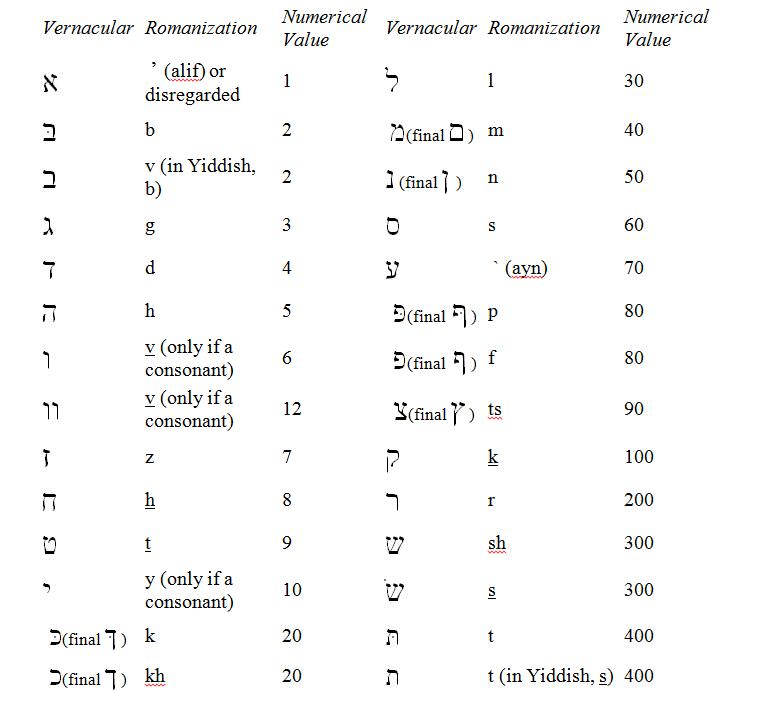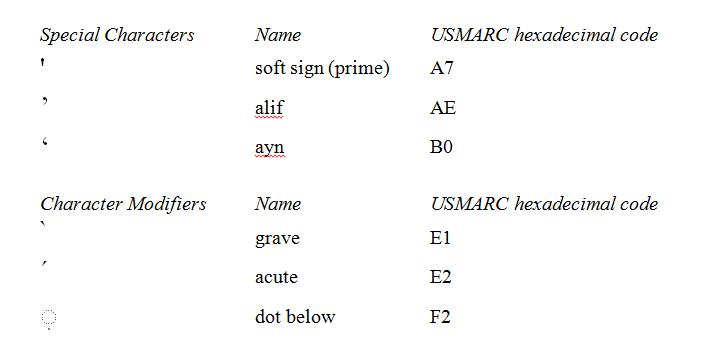The 22 Hebrew Letters
Hebrew and YiddishThe following romanization table attempts to represent the sound of Hebrew or Yiddish words but is applicable to all Hebraic languages. For Hebrew, it approximates the modern Israeli, primarily Sephardic, pronunciation. For Yiddish, the table follows the standardized, principally Lithuanian, pronunciation. In romanizing Yiddish, the etymology of the word is ignored. Consonants
Vowels
A single prime ( ' ) is placed between two letters representing two distinct consonantal sounds when the combination might otherwise be read as a digraph.
RULES OF APPLICATIONIn romanizing Hebrew, it is often necessary to consult dictionaries and other sources as an appendage to the romanization table presented here, primarily for the purpose of supplying vowels. The principle dictionary used is ha-Milon he-hadash (Jerusalem: Kiryat-sefer, 1966-1970) by Avraham Even-Shoshan. More detailed instructions on Romanization of Hebrew and Yiddish, including cataloging guidelines, can be found in Hebraica Cataloging (Washington, D.C.: Library of Congress, Cataloging Distribution Service, 1987) by Paul Maher. SPECIAL CHARACTERS AND CHARACTER MODIFIERS IN ROMANIZATION |
Adapted by Steven Bernstein from: "Hebrew and Yiddish", ALA-LC Romanization Tables: Transliteration Schemes for Non-Roman Scripts. Washington: Library of Congress Cataloging Distribution Service. 1991. p. 52-53.
